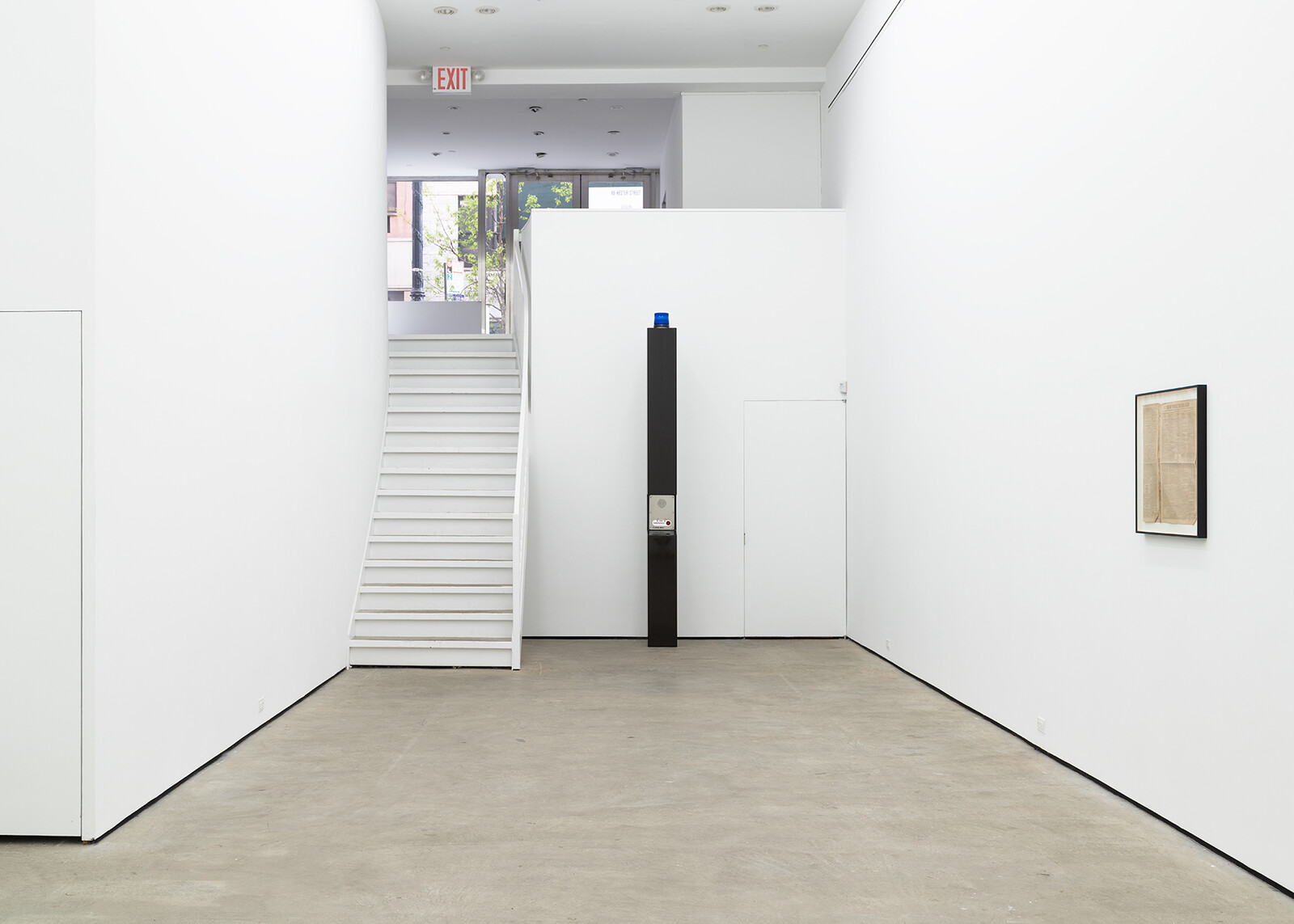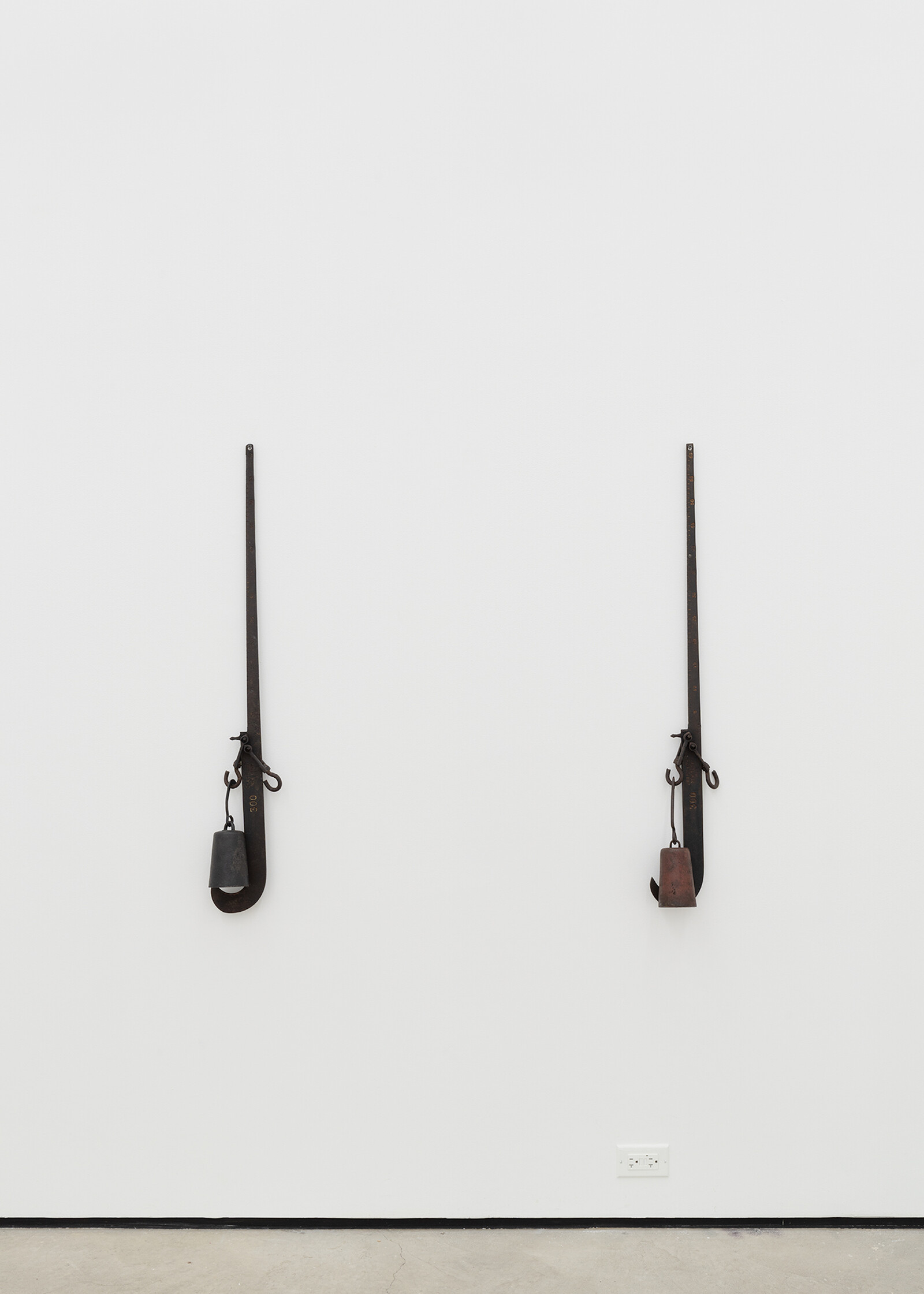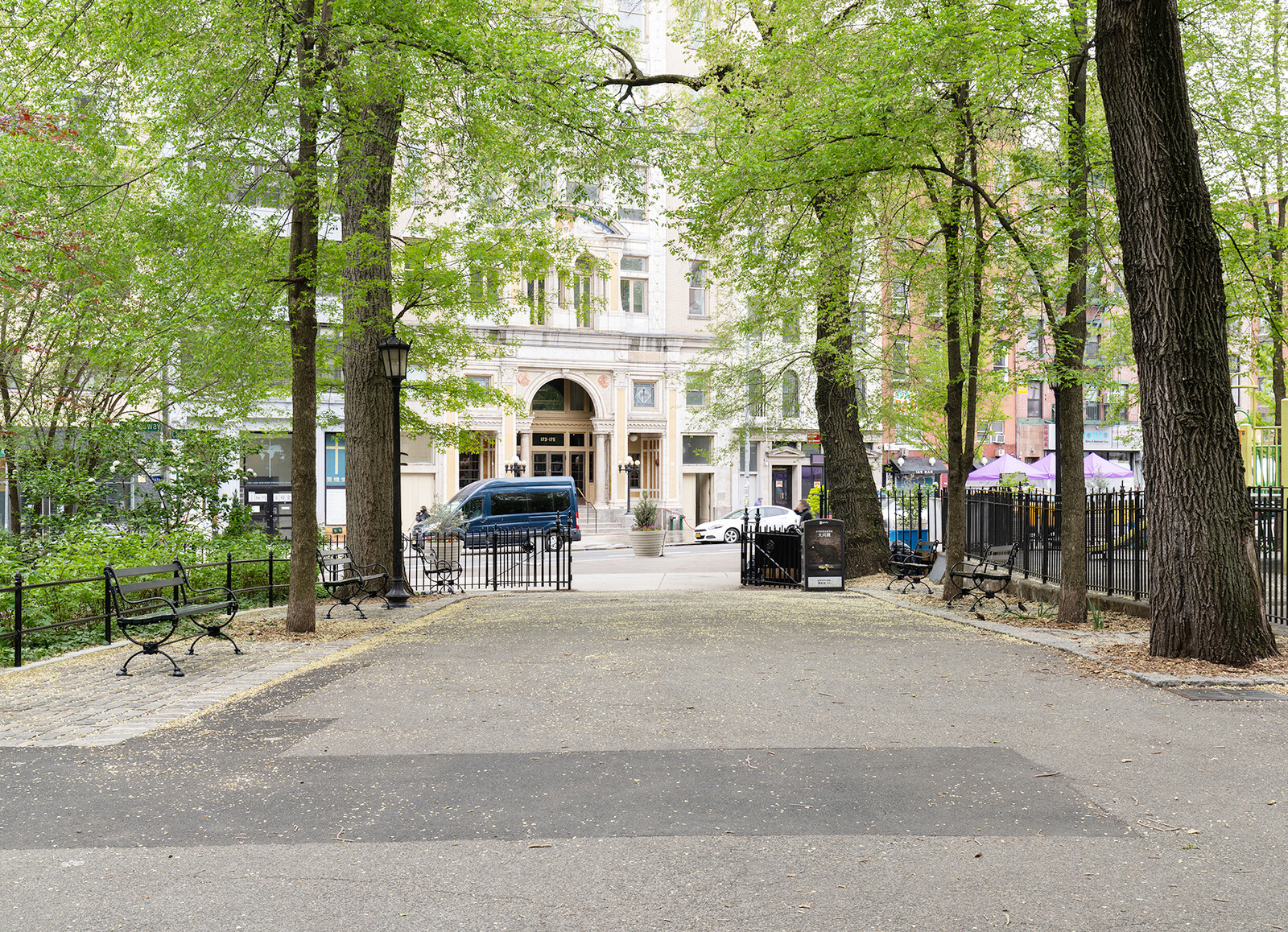Cameron Rowland’s artworks sometimes feel as if they are meant to serve as illustrations for a text or historical thesis. I don’t say this as a criticism. His breakout 2016 exhibition “91020000” at Artists Space in New York City contained previously manufactured items—to use the term “readymade” would already begin to aestheticize them—that partly functioned as visual counterparts to their captions and to an accompanying essay made available as a pamphlet. Displaying desks and benches made by inmates, “91020000” addressed the prison-industrial complex, which disproportionately incarcerates Black men and is a crucial node in slavery’s ongoing legacy in the United States.
Rowland’s current exhibition, “Deputies,” contains four object-installations (all undated) and a longer essay also available in takeaway pamphlet form. The theme here is the origins of policing in the United States with the establishment of slave patrols that monitored and disciplined the subjugated and hunted down fugitives. With a nod to site-specificity, the exhibition focuses on New York City (where the first official U.S. police force was created following the passage of the 1844 Metropolitan Police Act), and extends outside the gallery space to five benches installed in a nearby park, each one paying homage to a different unmarked seventeenth- to nineteenth-century Black burial ground in the city. Other than not being cemented to the ground, these furtive benches are indistinguishable from the ones provided by the city.
Rowland’s work incisively shows how the structures of racial capitalism are sewn into the fabric of both American history and current everyday life. Two framed newspaper pages from the January 16, 1803 edition of the New-York Herald feature stories that triangulate the economic history of the United States: an article discussing the increase on duties for domestic and imported goods (according to the brochure’s essay, “In 1822, cotton constituted 40 percent of domestic exports from the Port of New York,” thereby making the city essential to the institution of slavery); advertisements of land for sale that until a century or so previously had been the habitat of Indigenous tribes; and an offer of financial reward for the return of a fugitive slave from the town of Peekskill, just north of New York City (the brochure also mentions New York State’s substantial slave population prior to 1827).
Mercantilism, expropriated land, and slavery. This historical sweep is contrasted with and connected to the everyday in the form of five UHF radio scanners stacked on top of each other and protruding from the wall. Individual scanners are tuned to the twenty-four-hour police radio transmissions in each of New York City’s five boroughs (recordings are available on Essex Street’s website). These radio transmissions, that initiate police encounters with the public, regularly delineate potential suspects’ features, recalling the description of the runaway slave in the New-York Herald. In this context, it is important to remember that police murders of Black people frequently begin with mundane circumstances: an alleged counterfeit twenty-dollar bill, an air freshener stuck to a car’s rearview mirror, the selling of individual cigarettes.
Rowland posits a connection between these extrajudicial killings and the emergency call tower he has installed in the gallery. His artistic palette is appropriately severe, and also on display are two weathered, nineteenth-century steel cotton scales leaning against the wall—for rent, but not for sale. Rowland’s work has precedent in image- and text-based institutional critique pieces such as Hans Haacke’s Shapolsky et al. Manhattan Real Estate Holdings, A Real-Time Social System, as of May 1, 1971 (1971), which aimed to expose a major slumlord. Yet I came away from “Deputies” thinking just as much about the artist Tino Sehgal and his interest not in creating commodified art objects but in prompting discursive encounters, although Rowland’s approach is obviously much more politically charged. Shifting the focus from subjects to subjectivizations and from persons to situations, Rowland elides the human figure in order to highlight the forces that shape, produce, and terrorize it.



